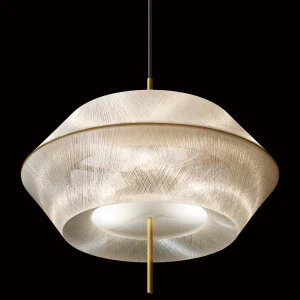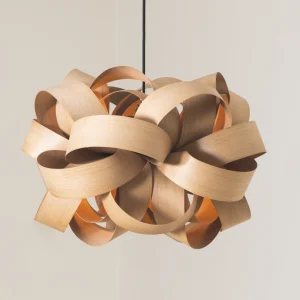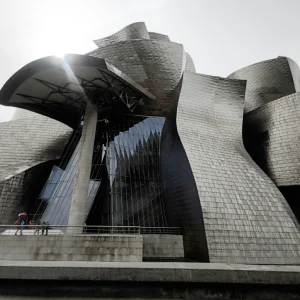Words By Emily Martin
Images By Gareth Gardner
PROJECT INFO
Client Historic Royal Palaces
Exhibition and graphic design Nissen Richards Studio www.nissenrichardsstudio.com
Exhibition build Sam Forster Associates
Lighting design Light Bureau
AV consultants Media Powerhouse
Mount maker Lapsley Frameworks
Paint Little Greene
NISSEN RICHARDS STUDIO has delivered the exhibition and graphic design for Untold Lives, located in the Pigott Galleries at Kensington Palace, which runs until 27 October 2024. The show switches the focus to those who worked at the royal palaces in the 17th and 18th centuries, with the studio tasked with bringing their stories to life.
 A christening dress; map graphic displaying the origins of royal palaces staff; and a new art commission in photographic form by Peter Braithwaite, re-imagining a historic, anonymous black trumpeteer
A christening dress; map graphic displaying the origins of royal palaces staff; and a new art commission in photographic form by Peter Braithwaite, re-imagining a historic, anonymous black trumpeteer
‘The subtle design task for this exhibition,’ Pippa Nissen, director of Nissen Richards Studio, comments, ‘was to bring people to life without disguising the historical reality of their status. One of the focuses was the use of contemporary narrative ideas, including graphic devices and specially commissioned artwork, to imagine and communicate the reality of these previously hidden lives, especially where few objects survive.’
There are five design principles that form the basis of the design approach. Firstly, making the invisible visible: palace servants formed an integral part of palace life, but little is often known about them as individuals. The design sought to provide glimpses of people usually hidden behind the scenes, including new photography created by the design team, used to create shadows and silhouettes, before personal stories are revealed through the scheme’s rich and vibrant design.
 A christening dress; map graphic displaying the origins of royal palaces staff; and a new art commission in photographic form by Peter Braithwaite, re-imagining a historic, anonymous black trumpeteer
A christening dress; map graphic displaying the origins of royal palaces staff; and a new art commission in photographic form by Peter Braithwaite, re-imagining a historic, anonymous black trumpeteer
Second is powered by people: a vast number of servants were needed to run a royal household and, as these people are the central focus of the exhibition, the design had to ensure they were encountered at each point as the visitor weaves through each room set.
The third design principle is intimate moments: some servants would have provided very personal services to members of the royal family, and been present in their most private moments. Nissen Richards Studio proposed creating small, intimate spaces to meet these particular servants, providing a sense of the closeness of these relationships through the spatial design treatment.
 A christening dress; map graphic displaying the origins of royal palaces staff; and a new art commission in photographic form by Peter Braithwaite, re-imagining a historic, anonymous black trumpeteer
A christening dress; map graphic displaying the origins of royal palaces staff; and a new art commission in photographic form by Peter Braithwaite, re-imagining a historic, anonymous black trumpeteer
The fourth: revealing the unexpected. Visitors can discover some of the more unheard of job roles undertaken in a palace, such as the official rat-catcher or the Keeper of the Ice and Snow. Elements of surprise and theatre were to accompany these surprising revelations of roles.
The fifth is making connections with today: The exhibition aims to represent the diversity of servants who worked at the palace, from different social and economic, racial and ethnic, national and religious backgrounds. It also showcases the variety of functions performed.
 Manipulated graphic depictions of workers, usually in the background and anonymous
Manipulated graphic depictions of workers, usually in the background and anonymous
Visually, approaching these principles is expressed through colour and vibrancy, such as the bold reds and blues of the new fabric linings inside the exhibition’s showcases. The paint colours used for the walls – all by Little Greene – refer to the historical focus period of the exhibition, while complementing the bright fabrics used for the display cases via a rich but muted colourway. Ordinary objects from the past are also brought to the fore throughout the exhibition to illustrate the working lives of palace staff. Additionally, a graphic threshold area at the outset shows how the hierarchy of command for staff functioned in the 17th and 18th centuries, displayed directly onto the wall as a form of staff family tree.
Enter the exhibition and visitors are greeted by a portrait of Theodore Randue, the housekeeper of Windsor Castle, as he ‘unlocks’ the door to enter the exhibition and the six rooms ahead, each with a dedicated theme. Start with Origins and Identities and move on to Skills and Expertise and then Status. A fourth room set houses a large reproduction of an historical painting depicting a tea party, with a new lighting scheme that purposefully draws the viewers’ attention away from the guests to the staff serving in the background.
 Golden chair commissioned by Queen Charlotte and embroidered by orphaned young women in 1780s London
Golden chair commissioned by Queen Charlotte and embroidered by orphaned young women in 1780s London
The fifth space is firstly the locus for the Matt Smith ceramics series telling the story of Gustavus Guydickens, with a second section looking at Care and Intimacy and focusing on the staff who covered the nursery, health and medical aspects of royal life, with intimate narratives and spaces supporting the storyline of intimate actions.
Manipulated graphic depictions of workers with shadow figures on the walls show both how people are and were constantly at work in the palaces, in their more usual anonymous state. Some of these were taken from photographs, while others were created by Nissen Richards Studio, helping to create also a sense of movement.
The sixth room deals with Legacies of Untold Lives, where pages from the account books become a kind of environmental wallpaper, surrounding the room’s central focus object area, where we see a number of objects given to workers by royalty – e.g. to Anne Percy, in recognition of her service as a wet nurse during George III’s reign.
The room also features a gold chair, commissioned by Queen Charlotte and embroidered by orphaned young women in 1780s London, while artworks in the room include an unknown page boy and a piece by contemporary artist Barbara Walker.
The exhibition’s final area features bespoke shelving, housing postcard-sized snapshots of current staff working at Historic Royal Palaces today.





